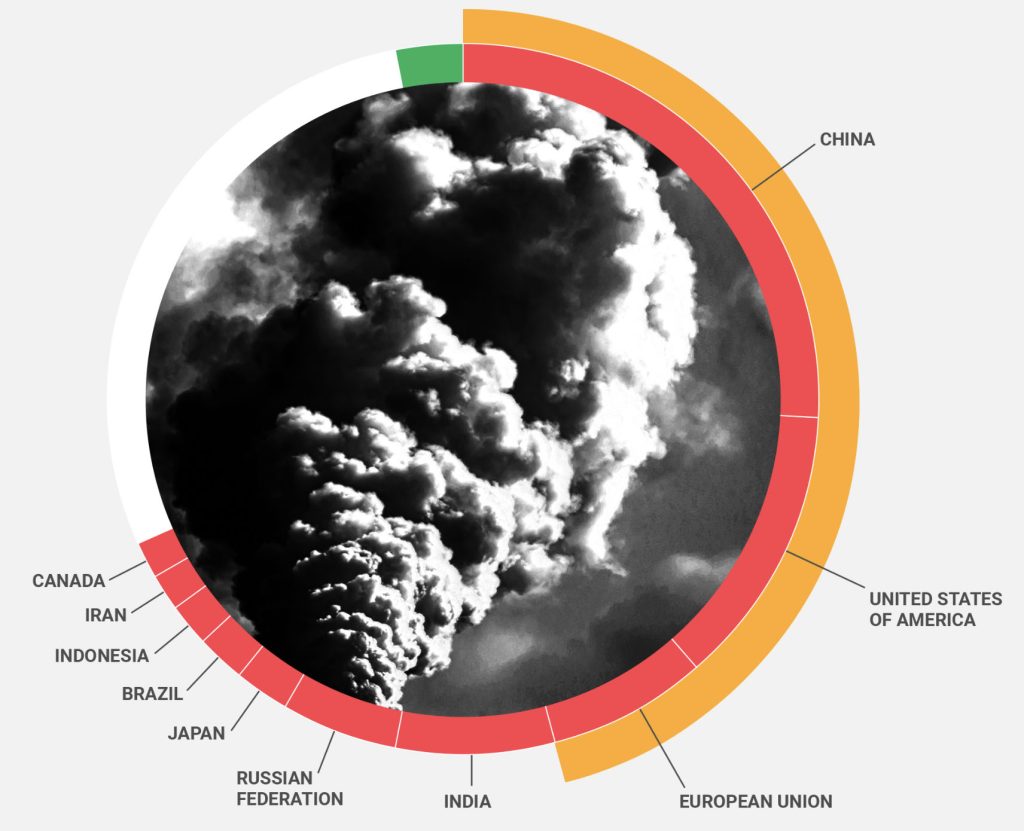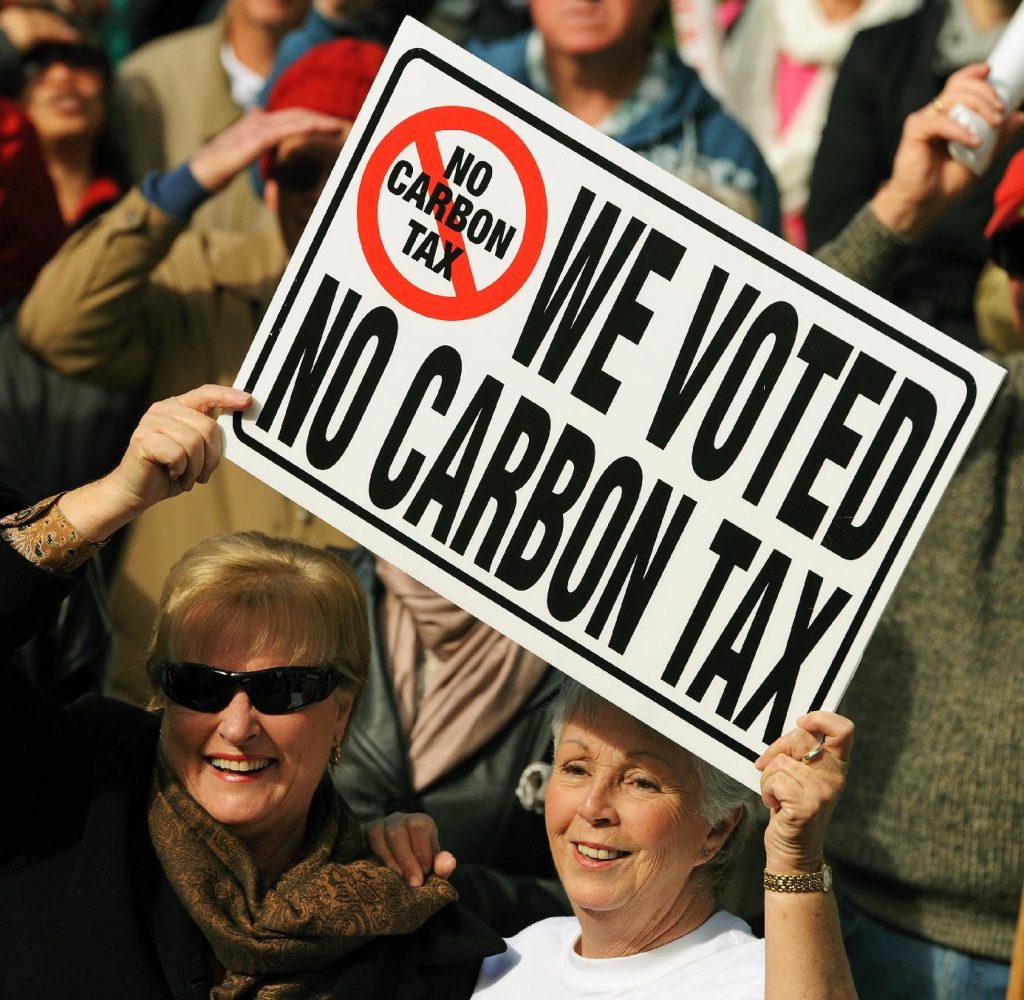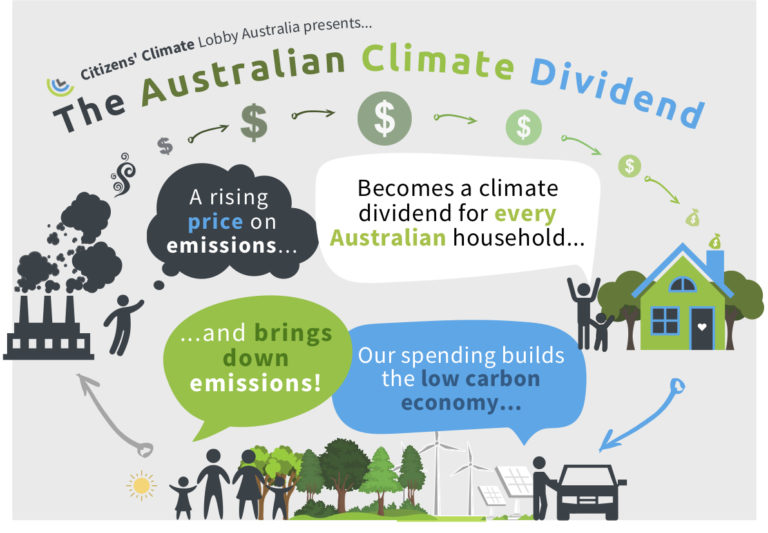Net-zero emissions can help us reduce our climate change impacts.
One of the biggest reasons behind climate change is greenhouse gases (GHGs). They trap energy from the Sun in our atmosphere. While we need some greenhouse gases to keep our planet warm, more GHGs in the air means a warmer Earth. There are many greenhouse gases, including carbon dioxide, methane and nitrous oxide. These often emerge from burning fossil fuels to produce energy, for transportation, and for agriculture.
Most scientists agree that global warming from greenhouse gases may bring humans to the brink of extinction. To avoid this, they acknowledge that average global temperatures must not rise more than 1.5°C above pre-industrial levels. Failing to do this will almost certainly mean catastrophic changes in the world’s climate.
Why 1.5° Degrees Celsius?
Since measurements started in 1880, the earth’s average temperature has increased. As of 2019, surface temperatures rose by just over 1°C since the 19th century. Even this is enough to change our climate. As a result, in 2015, 196 parties (including nations and multi-nation groups) ratified the Paris Agreement to try and halt this trend. In other words, we are running out of leeway.
Global temperatures exceeding 1.5 degrees Celsius will harm our planet and our lives. This YouTube video shows what could happen if we reach 3°C above historical levels.
Possible Climate Futures
The table below shows the IPCC’s latest global surface temperature projections for this century. There are five possible scenarios, depending on the GHGs we produce. Lower SSP (Shared Socio-economic Pathway) numbers describe fewer difficulties in reducing emissions.

If we continue pumping out emissions, as usual, temperatures could increase by over 4 degrees.
Even in the best-case scenarios, we are likely to exceed 1.5 degrees. Hence, we can see that climate models predict a range of temperature values around and above the crucial 1.5°C in all scenarios. However, the fewer emissions we make, the less impactful climate change will be.
The Largest Emitters of Carbon Dioxide

The world’s top five largest polluters made around 60 per cent of global CO2 emissions in 2018. Despite many developing countries producing few emissions, they often suffer more from climate change impacts. As many such nations lack the resources to reduce these, all countries need to work together to solve this problem.

What are Net Zero Emissions?
In 2009, scientists discovered that these gases affect our climate for centuries. To stop climate change, we have to absorb as many emissions as we produce. This is called net zero emissions. While trees and oceans can absorb emissions, there are too many GHGs for these to work effectively.
There are two possible ways we could reach this goal:
- Replace fossil fuels with renewables.
- Make use of market-based instruments (or MBIs).
The IPCC (Intergovernmental Panel on Climate Change) has confirmed in a recent report that humanity has worsened climate change. Governments aim to stop this, with the recent COP26 meeting providing a forum for world leaders to work together to control climate change. It is clear that we need to reach net zero emissions before it’s all too late. But how can we achieve this?
How can Market-Based Instruments create Net Zero Emissions?
The environment does not belong to an individual or group. Nature is there for the entire world population to enjoy its benefits freely. However, it can be argued that some restrictions are needed for everyone to keep enjoying these. Therefore, market-based instruments aim to reduce GHG emissions and protect environmental quality by providing incentives for polluters to reduce their impacts. Examples of MBIs include carbon taxes and emissions trading schemes.

The Types of Market-Based Instruments
Emissions Trading Schemes (ETS)
This is a system where governments set a limit on the emissions that each industry is allowed to emit. In this system, a certain number of emissions permits are made. These can be purchased or sold. While some systems only require companies to purchase permits when they exceed a certain amount of emissions (or a cap), others need all companies to buy permits. This system allows the market to regulate emissions.
There are two types of systems; command and control, where industries are asked to reduce their emissions by a set amount, and cap-and-trade schemes, which allow them to invest in efforts that reduce pollution to meet emissions goals.
Several countries have tried ETS. However, many have failed. For instance, the European Union’s ETS reduced emissions by 35% from 2005 to 2019, but issues with a lack of transparency have been noted. As part of its decarbonisation plans, China also aims to adopt an ETS. There are several concerns that can make these less effective than expected:
- The demand for permits may lead to price volatility and often result in significant changes in the price for permits. This happened in the state of California, where in 2000, the cost of permits for Nitrogen Oxide (NOx) increased from $400 per tonne to an average of $40,000 per tonne, owing to the need to reactivate polluting power plants to meet abnormally high energy demands. This lead to increased electricity costs.
- Cap-and-trade systems, unless properly regulated, may be tied to projects that fail to reduce emissions, or allow industries to dump carbon while appearing to reduce their impacts.
Carbon Taxes
Governments set a price, the carbon tax, which businesses and consumers must pay for each ton of greenhouse gas they emit. In theory, emitters should switch to other fuels (such as renewables) or adopt new technologies to avoid paying taxes.
Advantages
Many economists contend that a carbon tax is a viable policy option. They have several advantages over emissions trading schemes, including:
- Unlike ETS schemes which tend to indirectly drive polluting costs upward, these tend to increase polluting costs from the outset. Therefore, they are often harder to evade or avoid in comparison.
- Carbon taxes provide governments with a flow of revenue that can help fund green energy or further reduce climate impacts. This however, depends on said governments investing the revenue in these.
- They can reduce price volatility compared to ETS schemes, as they are not subject to ETS permit demand.
Disadvantages
Politics play an extensive role in the implementation of MBI schemes, including carbon taxes. If large blocs of the population and/or interest groups are not convinced of their merits, they may take steps to oppose it. As a result, a carbon price can be difficult to maintain.
Australia attempted to implement such a scheme in 2011. However, controversy would follow owing to interest groups and the opposition party perceiving it to be harmful to the economy. By 2014, it would be repealed after the opposition party came into power.
As a result, many politicians often see no gain for themselves by introducing a carbon tax.

Carbon Pricing Dividend
Similar to a carbon tax, except it does not generate cash for governments. Residents instead get paid this amount in quarterly dividends. Created in Canada in 2021, it aims to allow the country to exceed its Paris Agreement targets and reach net zero. In Australia, the Citizen’s Climate Lobby, an Australian NGO, is lobbying for the adoption of a similar scheme known as the climate dividend. The picture below illustrates the concept.

The Advantages and Disadvantages
When compared to an ETS, a dividend-based carbon pricing strategy offers similar benefits as a carbon tax would: encouraging polluters to reduce their emissions outputs. However, unlike a carbon tax, the dividend covers one of the carbon taxes main downfalls – public approval.
The costs of carbon taxes are often passed down to consumers. By passing the benefits of these to them, it can mitigate these costs. For instance, a 2008 carbon tax introduced in British Columbia, Canada faced significant opposition. Paying dividends from these, however, weakened the opposition and gave it broad support.
However, because it is still a ‘tax’ by design, this scheme faces many of the same political challenges as a carbon tax would, particularly as polluting companies would face the impacts of these.
Carbon Offsetting
Carbon Offsetting aims to encourage companies to finance efforts to reduce, avoid or separate GHG emissions from the air. It is possible to use carbon offsetting in conjunction with an ETS, whereby parties can use or sell credits to reduce GHG emissions. Examples of carbon offsetting are:
- Creating carbon sinks (such as a plantation forest) to offset the CO2 generated from industries such as airlines.
- Capturing methane from sources such as landfills or livestock and using it to generate electricity.
Despite the hype around carbon offsetting, does planting trees to offset carbon emissions offer the same benefit as halting the use of fossil fuels?
Critics of the idea argue that it is only an excuse to delay systemic changes to our energy generating systems. Furthermore, including carbon offsets into an ETS strategy raises issues.
These may lower prices for ETS permits, reducing incentives to innovate and invest in the technological changes needed to address climate change.
Countries that have Signed up for Net Zero Emissions
Although certain countries are hesitant to commit to net zero emissions, there are reasons to be positive. As of December 2021, 68 countries and the European Union have set net zero as a target. In addition, over 100 nations have proposed or are exploring measures to achieve a net zero goal.
Bhutan and Suriname, according to reports, have reached net zero emissions. Bhutan’s GNH index concept offers a holistic approach, which has established the country’s strong environmental protection laws. Suriname has pledged to retain 93 per cent of its forest cover, whereas Bhutan has set a limit of 60 per cent forest cover and solely utilises hydroelectric power. Both governments have also vowed to invest in renewable energy and green jobs.
Keeping the Dream of 1.5°C Alive
How we respond in this decade will determine what we face in the future.
MBIs hold immense global appeal. They have the potential to be more efficient, and cheaper for companies than command and control regulations. However, many aspects of the design, implementation, adoption, and effectiveness of MBIs must consider where they are implemented, and change accordingly to be effective.
While MBIs can reduce GHG emissions, there are still concerns. There are concerns that if only some countries implement these schemes, it may negatively affect their own companies while others remain unaffected by emissions reduction costs. However, that stance should change as the worlds largest emitters commit to market-based policies to reach net zero emissions. Among these strategies, evidence suggests a carbon-pricing plan is the simplest and cheapest way to reduce GHG emissions.
While there are other strategies to reduce emissions, the efficacy of these is uncertain. Carbon Capture and Storage technologies, for example, are unproven. Moreover, it can also encourage further exploration of fossil fuels while distracting from other solutions.
To stop climate change, we must work together. Committing to net zero emissions is the first step in keeping global temperatures below 1.5 degrees Celsius.
We must back up our words with action. We need to preserve the world’s forest cover, encourage regrowth, and conserve biodiversity.
However, it can be hard to see how sustainable companies are. We at the THRIVE Project have a framework that aims to fix this. It uses scientific data to allow anyone, from governments to individuals, to track climate impacts, and know what actions will have the least impact on our precious Earth. Together, we can make sure everyone has the chance to not just survive, but thrive!
If you want to plant the seeds of change, click this link to find out more about our THRIVE platform.
Otherwise, we regularly post articles like this one on our THRIVE Blog page.























